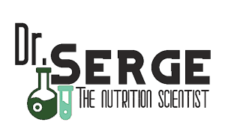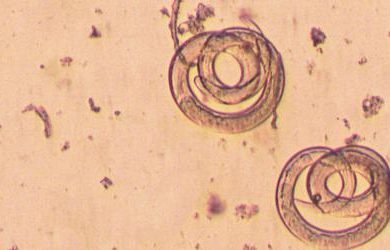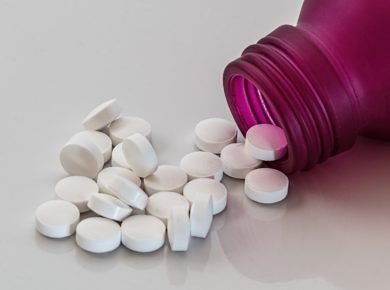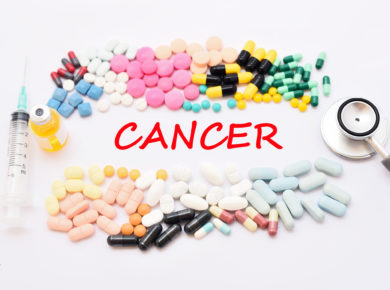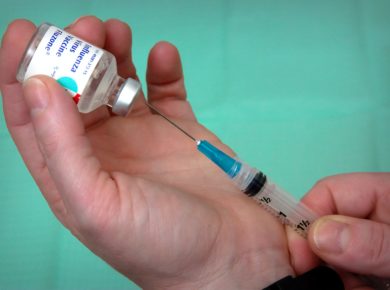Lately, we have heard a lot about this cytokine storm that some herbs can cause especially in relation to COVID19.
As you can expect, this is not based on science at all.
People worried that elderberry could contribute to the “cytokine storm” seen in COVID-19, a condition where the immune system responds strongly and dysfunctionally to the virus, causing damage to multiple organs and potentially causing death.
Concerns have been raised that certain herbs acting on the immune system might deleteriously enhance the cytokine response during acute respiratory viral infections.
This fear is not scientifically sound, and I will go over the facts in this blog.
Yes, the elderberry is safe to take, even if you have the coronavirus. Actually, it can help fight it off.
First, let’s start with what are cytokines.
Cytokines are a large group of molecules comprising proteins, peptides, and glycoproteins that are secreted by specific cells of the immune system.
They are signaling molecules that mediate and regulate both immunity and inflammation. Cytokine is a general term: other group names are used based on function, cell of secretion or target of the action.
For example, cytokines made by lymphocytes can also be referred to as lymphokines, while interleukins are made by one leukocyte and act on other leukocytes. Chemokines are cytokines with chemotactic activities. Interferons are named for their ability to indirectly interfere with a viral infection.
Cytokines are in effect the language of the immune system and play a critical communicative role in initiating and sustaining both the innate and adaptive immune responses to an invading pathogen.
Just because an agent (such as a medicinal plant) facilitates cytokine signaling release in the early stages of an immune response does not necessarily mean it will drive that cytokine response to an excessive level in the later rampant stage of an infection.
In other words, improving efficiency does not imply subsequent overproduction. The opposite is more likely to be true.
Exuberant immune responses induced by the later stages of an infection have been described as a “cytokine storm” and are associated with excessive levels of proinflammatory cytokines and widespread tissue damage. We see this with all kinds of infections, like the flu and this coronavirus.
A range of pathogens have been observed to cause this response, but the reasons why the cytokine storm affects only certain individuals during an infection and not others are not fully understood.
The term was first used in 1993 to describe the effects of graft-versus-host disease.
In 2003, the cytokine storm was shown to be associated with severe reactions to influenza viruses and subsequently to various viral, bacterial or fungal infections. While there is no agreed definition of what a cytokine storm exactly is, it is characterized by a marked severity of infection due to an activation cascade that leads to an auto-amplification of cytokine production.
If you take a look at this from another perspective, it is an autotoxicity induced by the pathogen.
It is worthwhile to explore how a cytokine storm develops during a viral infection. It has been proposed that our response to a respiratory virus occurs in three stages:
stage I, an asymptomatic incubation period with or without detectable virus.
stage II, a non-severe symptomatic period with the presence of a virus.
stage III, a severe respiratory symptomatic stage with a high viral load.
You can read more on this concept here:
https://www.nature.com/articles/s41418-020-0530-3
During the incubation and non-severe stages, a specific adaptive immune response is required to eliminate the virus and to preclude disease progression to the severe stage.
This, in turn, requires a dynamic innate immune response, which will, of course, involve the efficient local release of cytokines as signaling agents. Therefore, any strategies that boost immune responses at the early stages are regarded as important.
When a protective immune response is impaired, the virus will propagate, and massive destruction of affected tissues may occur. In this event, damaged host cells induce chaotic innate inflammatory responses in the lungs that are largely mediated by pro-inflammatory macrophages and granulocytes, and a cytokine storm results.
In other words, a cytokine storm is a late-stage manifestation of the viral disease that occurs only when the immune system fails to contain the virus. It is not the manifestation of an overactive immune response directly targeted at the infection; it is quite the opposite. Surely this argues for the intensive use of immune support during stages I (late-stage prevention) and II (early acute management) to avoid its occurrence.
The possibility that a “cytokine storm” contributes to the severe disease state and death of COVID-19 originally came from a report in The Lancet that was published on February 15 (1–3).
At the time, the blood levels of various cytokines and other markers of inflammation were all pulled from patients’ medical records after they had been discharged from the hospital, or, in many cases, died.
Since the data was not collected systematically to look for the nature of the cytokine storm taking place, it is less valuable for understanding what is happening than newer data that was collected for that purpose.
The pattern that is emerging from the newer data is that severe COVID-19 cases, when compared to milder cases, are marked by the following:
- Increased neutrophils. Neutrophils are white blood cells that have the potential to cause tissue damage by generating bleach, hydrogen peroxide, and other toxic substances while trying to kill microbes.
- Lower levels of lymphocytes, especially CD4 and CD8 T cells and natural killer cells. Lymphocytes are white blood cells that are found most abundantly in the lymphatic system, which allows a fluid called lymph to bathe our tissues and return fluids to the bloodstream. CD4 T cells are “helper T cells” that help activate CD8 “killer T cells,” which kill cells that are cancerous or infected with viruses. While T cells respond to signs of specific infections called “antigens,” natural killer cells are generalists and will kill any cell that appears to be infected with a virus while the T cells are preparing to mount a more specialized response.
- Higher levels of interleukin-6 (IL6, or IL-6). IL6 is a chemical messenger with a wide variety of inflammatory and anti-inflammatory functions. It increases energy consumption and heat generation, plays a role in fever, and stimulates the production of neutrophils, which are the one class of white blood cells that are elevated in severe cases of COVID-19.
As Dr. Chris Masterjohn said:
“There are a variety of other markers of inflammation that have support from fewer studies, or conflicting results between studies. These include tumor necrosis factor-alpha (TNFα), interferon-gamma (IFNγ), and a wide variety of other less often measured cytokines. Other inflammatory factors that are elevated in severe cases are more the result of the cytokines released than the cause. These include C-reactive protein (CRP), which is released by the liver to clean up dead and dying cells; D-dimer, released as blood clots are broken down; and ferritin, a protein that helps sequester iron to prevent it from interacting with hydrogen peroxide to aggravate the risk of tissue damage, and to prevent bacteria from using it to fuel their own growth.
Overall, recent studies have identified the neutrophil-to-killer-T-cell ratio as the strongest predictor of disease severity (4), IL-6 as the strongest predictor of requiring ventilation (9), and low lymphocytes as the strongest predictor of death.
This obviously is absolutely not a case of an “overactive immune response” at all. It is a dysfunctional immune response, characterized just as much by things that are too low (lymphocytes and natural killer cells) as it is by things that are too high (neutrophils and IL-6).”
Indeed, none of this data indicates an overactive immune response. On the contrary, it shows a dysfunctional immune system where the body does not respond appropriately to this infection.
The most respected source claiming this is a COVID-19 FAQ on the site of the Andrew Weil Center for integrative medicine, which states this about elderberry:
Q: Why is elderberry considered safe for prevention but recommended to stop with symptoms or positive COVID-19 test results?
A: Elderberry extracts may help to prevent the early stage of coronavirus infections, which includes COVID-19. Elderberry contains compounds that decrease the ability of viruses to infect cells. Elderberry is considered generally safe and in influenza B (cause of common cold), the use of elderberry shortens the duration of symptoms. However, as a part of its immune-supportive actions, elderberry increases immune cell release of tiny chemicals called cytokines. Specifically, elderberry increases the release of a cytokine called IL-1B which is a part of the inflammatory reaction to COVID-19 that can result in acute respiratory distress. For this reason, to minimize the possibility that elderberry could aggravate the inflammatory “cytokine storm” associated with the more severe COVID-19 infections, it is recommended to stop elderberry at the first signs of infection (fever, cough, sore throat) and/or if you test positive for the virus.
Examine.Com takes a more moderate stance:
Elderberry has some evidence for the treatment of influenza and the common cold, but very few studies exist thus far. Some people on the web have warned that it could initiate or exacerbate “cytokine storm”, based on a study circulating around that shows increased cytokine production from elderberry intake. The authors propose that “in addition to its antiviral properties, Sambucol Elderberry Extract and its formulations activate the healthy immune system by increasing inflammatory cytokine production” (as cytokines are a natural and critical part of immune responses to pathogens). Cytokine storm though isn’t a mere bump in cytokine production, it’s a severe overreaction to a pathogen by the immune system, with a massive increase in immune cells and the cytokine messengers they release. In cases of severe flu, it’s associated with outcomes ranging from lung inflammation to death. Although it appears unlikely that a low-to-moderate dose of elderberry for prevention would initiate cytokine storm, nobody knows if taking it (especially in large amounts) when symptoms are severe may have adverse effects. Discuss supplementation thoroughly with your physician before using it, as evidence is constantly changing for COVID-19.
Does Elderberry Increase Inflammatory Cytokines?
While cytokine storm was first linked to a viral infection in only 2003, it has clearly been a feature of such infections since time immemorial. Hence, we are not dealing with a new phenomenon when it comes to observations about herbs and their role to prevent and reduce infection.
There is no suggestion from traditional western herbal writings, including those of such well-documented groups like the Eclectics (who accumulated considerable experience during the Spanish flu pandemic), that the use of immune herbs aggravated viral infections.
Also, a range of traditional Chinese formulations (several containing the immune herb Astragalus) have been used extensively in China during various recent viral epidemics, with no suggestion of their exacerbating cytokine storm.
The use of the black elderberry (Sambucus nigra) during acute respiratory viral infections is relatively new, arising from research conducted in the 1970s.
Initial investigations revealed antiviral activity, and this remains a research focus.
https://www.ncbi.nlm.nih.gov/pubmed/19548290
However, later research has indicated a potential role for the herb in enhancing immune responses, especially cytokine production. Meta-analysis certainly supports its benefit when administered during acute viral infections.
https://www.ncbi.nlm.nih.gov/pubmed/30670267
What we can glean from clinical studies is bound to be more reliable. One such trial in 473 patients (including many with confirmed influenza A and/or B) found that a combination of elderberry and Echinacea given as soon as possible for 10 days after symptoms developed was as effective as the antiviral drug oseltamivir.
https://www.ncbi.nlm.nih.gov/pubmed/26265958
There was no suggestion of harmful effects or induction of cytokine storm (the authors used the term septic shock to flag this possibility). In fact, adverse events were higher in the antiviral drug group. No hospitalizations were reported during the investigational period in either treatment group.
In another large trial involving 312 economy class passengers traveling from Australia to an overseas destination, participants took elderberry continuously from 10 days before flying overseas until five days after arriving at the travel destination.
https://www.ncbi.nlm.nih.gov/pubmed/27023596
Most cold episodes occurred in the placebo group (17 versus 12). However, the difference was not significant (p = 0.4). Placebo group participants had a significantly longer duration of cold episode days (117 vs. 57, p = 0.02) and the average symptom score over these days was also significantly higher (583 vs. 247, p = 0.05). These data suggest a significant reduction of cold duration and severity in air travelers. The herbal treatment was well tolerated, with no serious adverse events.
These and other human trial results strongly imply that concerns over what is essentially a food precipitating a life-threatening adverse event during an infection (cytokine storm) are merely theoretical.
The one and only randomized, placebo-controlled trial that tested this in humans fed people 1000 milligrams of elderberry extract per day for 12 weeks and found no difference in inflammatory markers whatsoever.
https://pubmed.ncbi.nlm.nih.gov/19793846/
The one study cited in support of this by the SurvivalBlog and by Examine.Com looked at this question by taking monocytes from the blood of healthy volunteers and then incubating them in elderberry extract.
https://pubmed.ncbi.nlm.nih.gov/11399518/
Elderberry stimulated the production of TNFα and IL-6, both of which are of concern for the COVID-19 cytokine storm.
As Dr. Masterjohn said:
“However, the one randomized, placebo-controlled human trial that was done found no effect at all of elderberry on TNFα or IL-6. In fact, IL-6 was nearly identical across groups and from baseline to end, while TNFα, though not statistically significant, was 20% lower at the end of the trial in the elderberry group compared to the control group, and 32% lower at the end of the elderberry period compared to the elderberry group at baseline.
These two studies are actually excellent as a direct comparison. The cell study was done on monocytes isolated from the blood of healthy volunteers. The human trial was done in healthy volunteers, who have monocytes circulating in their blood that are perfectly capable of producing both TNFα and IL-6, both of which are measurable in the blood.
Clearly and obviously, if direct contact between elderberry and a monocyte causes an increase in TNFα and IL-6, but a human eating elderberry extract does not experience a rise in TNFα and may even have it fall, then the relevant components of elderberry that are having this effect on monocytes are not reaching the monocytes within the live humans in the form that would have this effect or something that is present in the live human but not the isolated cell is eliminating that effect.”
In addition, cell studies are not at all in agreement that elderberry increases inflammatory cytokines:
- In isolated human macrophages, elderberry extract inhibits the production of TNFα and IL-6 that is otherwise caused by seven different stimuli derived from bacteria that cause inflammation of the gums (periodontitis). It also inhibited neutrophil activation.
https://pubmed.ncbi.nlm.nih.gov/16460254/
- In isolated mouse macrophages, elderberry decreased the amount of TNFα, and IL-6 generated by lipopolysaccharide (LPS), a component of the cell wall of many pathogenic bacteria.
https://www.ncbi.nlm.nih.gov/pmc/articles/PMC6724042/
- In gingival fibroblasts, which are collagen-producing cells found in the gums, elderberry slightly reduced the production of IL-6 in response to LPS.
https://pubmed.ncbi.nlm.nih.gov/23711140/
- When LPS derived from E. coli was mixed with serum taken from healthy human volunteers, it caused the TNFα to increase in the serum. Elderberry blunted the rise in TNFα by up to 86%, depending on the concentration and the type of extract.
https://pubmed.ncbi.nlm.nih.gov/9324006
These studies were done in vitro. Now let’s look at 2 studies done in animals:
https://pubmed.ncbi.nlm.nih.gov/26314315/
https://www.ncbi.nlm.nih.gov/pmc/articles/PMC3450936/
These two animal studies are in agreement with the human study that elderberry does nothing to IL-6 in healthy humans or animals, though it might lower TNFα a little in humans. The animal studies further suggest that in pathological conditions, elderberry either has no effect or reduces each of the two cytokines.
The virus that causes COVID-19 is SARS-CoV-2. It enters cells by docking to the cell using a protein known as ACE2. This is required for it to enter the cell.
Only two other known viruses, SARS-CoV, which causes SARS, and a more moderate virus, human coronavirus NL63 (HCoV-NL63) share the same means of entering cells. Although elderberry has not been tested directly against SARS-CoV-2, it is antiviral toward HCoV-NL63. In fact, it directly interferes with the binding of this virus to the ACE2 protein, which stops it from entering the cell. Since NL63 shares this mechanism with SARS-CoV-2, this makes it very likely that elderberry has the same antiviral activity toward SARS-CoV-2.
https://www.sciencedirect.com/science/article/pii/S0168170219304198
Elderberry also has antiviral properties toward avian infectious bronchitis virus (IBV), which infects chickens and other birds, and appears to compromise the lipid envelope.
https://www.sciencedirect.com/science/article/pii/S0168170219304198
Although IBV is not known to dock to ACE all coronaviruses have lipid envelopes, so this might be an additional antiviral mechanism that generalizes to SARS-CoV-2.
Trials using elderberry for the flu (28) or the common cold (29) used 175 mg extract in a lozenge 4 times per day (x/d), 1 tablespoon syrup 4x/d, or a 300 mg extract in a capsule 3 x/d. These trials found that elderberry cuts the duration of the flu in half and cuts the number of days sick with the common cold in half and reduced the severity of the symptoms in half.
https://pubmed.ncbi.nlm.nih.gov/27023596/
https://pubmed.ncbi.nlm.nih.gov/24409980/
The flu, in particular, is very compelling, because two trials have shown it to be effective in humans, and in the lab, it has activity against ten different strains of the flu virus.
https://pubmed.ncbi.nlm.nih.gov/24409980/
The concordance between in vitro (in a lab dish) and human trial evidence for the flu, and its activity toward lipid envelopes and ACE2 binding that we would expect to generalize well to SARS-CoV-2, make elderberry a strong candidate as an antiviral for COVID-19.
Since 1000 milligrams per day of elderberry extract has been used safely for 12 weeks with no effects on inflammation and no evidence of any serious side effects or toxicity, elderberry also seems harmless to use for COVID-19 prevention.
If you develop a fever, muscle aches, or dry cough, you may have COVID-19 and should seek medical attention, and should follow any medical advice you receive, including continuing or removing elderberry.
But should you, based on the evidence reviewed here, withdraw the elderberry upon the first sign of symptoms or upon diagnosis?
I don’t think that is wise. If the elderberry is indeed antiviral toward SARS-CoV-2, then the overwhelmingly most important way to avoid a cytokine storm is to maintain a very robust antiviral defense right through the peak viral loads.
The virus continues to replicate in the upper respiratory tract for five days after symptoms develop and continues to replicate in the lungs for at least ten days after the first day of symptoms. Barring medical advice otherwise, I would continue the elderberry at least through this period.
https://www.nature.com/articles/s41586-020-2196-x
Concerns have been raised that certain immune acting herbs might deleteriously enhance the cytokine response during acute respiratory viral infections and trigger or increase the risk of a cytokine storm.
Such concerns do not differentiate between the initial role of cytokines during an infection as immune signaling agents versus their later role in promoting an inflammatory response.
In particular, cytokine storm is a chaotic, intense and unregulated response to massive necrotic tissue destruction that is unlikely to be capable of further augmentation by any agent, much less a relatively benign medicinal plant.
Neither traditional use, clinical trials nor modern pharmacology (when interpreted in the appropriate context) supports any concerns about common immune herbs increasing the risk of cytokine storm during an infection.
In fact, the opposite is more likely to apply since these herbs will support a focused initial immune response, including enhanced cytokine signaling, and thereby reduce the risk of any infection progressing to stage III development of cytokine storm.
Herbs are best given in combination, and such informed use of herbal prescribing can lower the risk of side effects and improve clinical outcomes. In the context of reducing the risk of cytokine storm after an infection has taken hold, the potentially valuable role for the inclusion of diaphoretic herbs in the treatment protocol needs to be given due attention.
The Bottom Line
- Elderberry is anti-inflammatory in the cells that matter, macrophages, and neutrophils.
- Elderberry only seems pro-inflammatory in cells that don’t matter as much as macrophages and neutrophils (monocytes) or cells we probably want stimulated (dendritic cells).
- Elderberry is neutral or anti-inflammatory in animals when the cytokines that matter (such as TNFα and IL-6) are measured.
- Elderberry is neutral toward IL-6 in healthy humans and possibly slightly anti-inflammatory for TNFα.
- The primary issue with the COVID-19 cytokine storm is unlikely to be a dietary supplement crossing paths with a monocyte or dendritic cell. Rather, it’s the increased macrophage content of the lungs.
- The most important factor in avoiding it, beyond avoiding the virus itself, is a robust and sustained antiviral defense.
In conclusion, elderberry is safe for viral prevention and during infections as well. Actually, it can help your immune system to fight off viral infections.
Luke 10:19:
“Behold, I have given you authority to tread on serpents and scorpions, and over all the power of the enemy, and nothing will injure you.”
God bless y’all 😊
Dr. Serge
